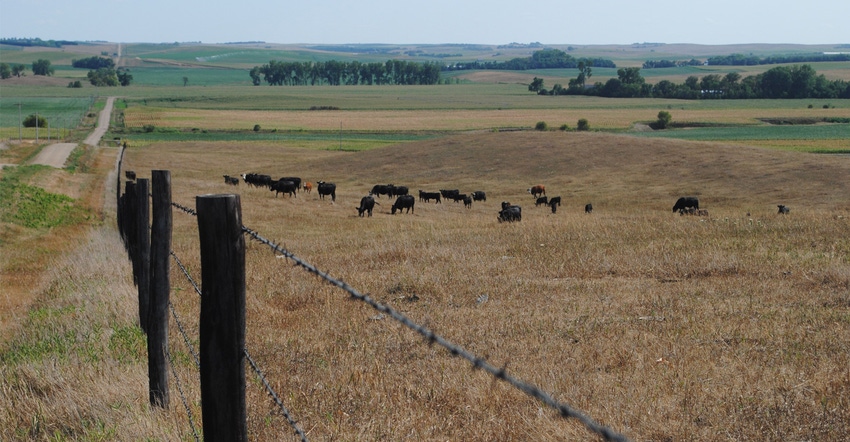Prepare for times of drought — even when it’s raining.
August 31, 2017

By Tammy Clark
Drought can be devastating to farmers and ranchers, but with careful planning, producers can survive it and even come out on top financially. "When it's raining, it's hard to remember what it was like when it was dry," says Tonya Haigh with the National Drought Mitigation Center at the University of Nebraska-Lincoln.
"That's why we recommend planning for drought, because we know the dry spells are going to come," she continues. "Drought is a hazard. It impacts forage capacity, damages rangeland health and decreases aquifer levels," she says. "Most people think there is nothing you can do about what happens to you during drought, and that you just have to survive it and go on."
However, Highmore, S.D., rancher Jim Faulstich has found that planning before a drought has become a critical part of getting his ranch through it. "I have actually found that drought can be beneficial," he tells producers. "There are positive opportunities that can happen during a drought."
In his own operation, Faulstich has used drought to improve genetics and clean up problem animals. He keeps two herds of cattle. The second group of cows are ones with problems like big bags, bad eyes or a not so perfect disposition. He keeps these cows with his heifers and breeds them for a short season. "If I need to pull the trigger because it's dry and we don't have enough forage, I can easily disperse those," he explains. "It's nice to have that option."
Haigh reminds producers how important it is to maximize the health and flexibility of an operation before drought. "Monitor the health of resources and precipitation, as well as soil moisture and the plant, itself," she says. "Maximizing the health of resources can be through the grazing system or adjusting the stocking rate and resource base. Maximizing the hydrologic base and plant diversity in the rangeland system are also important," she notes.
Faulstich uses drought as an opportunity to improve infrastructure and natural resources. "During a drought, the government will usually step forward with emergency cost-share programs," he says. "I take advantage of that by putting in waterlines and new water sources. On our operation, we have made natural resources a priority."
Drought has also shown Faulstich the importance of wetlands, and how they can be used to survive a drought. "Wetlands have saved us a number of times when it is dry," he explains. "We have windrowed cattails, chopped them up and poured molasses on them. One winter, we fed them to the cows along with some ear corn I was able to buy," he says.
"While we can't control whether or not it rains, we can control what we do before, during and after drought," Haigh says. "Recovery can really change the impact drought can have. The more we can do to minimize the impact, the better off we are," she explains.
A drought plan could be more accurately called a disaster plan, Faulstich says, because it should also cover other disasters like fire, storms and insect damage. "Every operation is different, so there is no drought plan that will be the exact same as someone else. It applies to large operations as well as small ones," he says. "Profitability, sustainability and resilience are all important to the ranching business, and they require working with nature, diversity, flexibility and soil health," he notes.
In a drought situation, Faulstich says the decisions made are the result of basic business plans he learned the hard way. He points out a photo from his own operation where a piece of land looks grazed to the ground. "It was actually one of the nicest pieces we ever had. It was 18 inches to 2 feet tall, and then we got snow and 3 inches of rain on it. It formed a layer of ice and was just like concrete. There was no grazing left. It was our winter pasture, and if we wouldn't have had a drought plan, we wouldn't have been prepared for it," he states. "It is situations like this that bring us that much closer to be ready for a drought."
Clark writes from Potter.
You May Also Like

.png?width=300&auto=webp&quality=80&disable=upscale)

